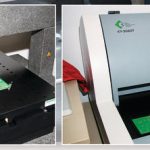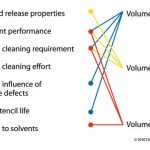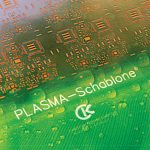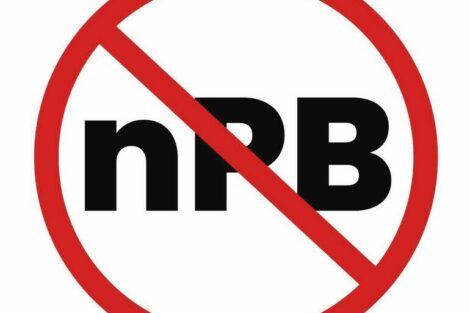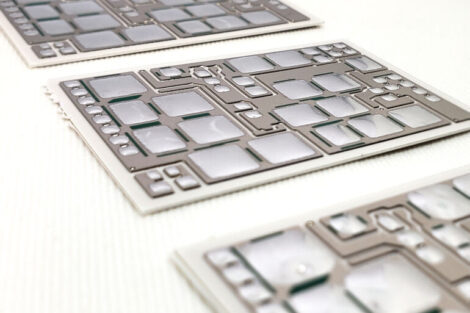In bionics, biology is studied systematically to find solutions to technical problems. Alternatively, principles of biological model systems are abstracted independently of the product. Once such new principles have been established in technology, the applications can be used in any suitable area.
Andreas Wilbert, Christian Koenen GmbH
Today, there are many useful inventions that fit this pattern, for example the Velcro fastener, which was actually inspired by the hook-and-loop system of the burdock plant. At Christian Koenen, in a process spanning over several years, a new coating technology has been developed that owes some of its properties and particularly its surface to the model of nature.
Reactions to solvents
Tests on the reaction of the surface coating with cleaners (solvents) that were conducted at the companys own laboratory have shown that the „plasma coating“ remained stable in contact with all alcohols, acetone and ethyl acetate. Even though reactions in some areas could be observed depending on the duration of the application, it must be noted in this regard that the cleaning cycles could be significantly reduced, which is due to the properties of the coating, among other things. A large number of pastes, adhesives and printing media exist, that produce various chemical reactions when used in combination with cleaning agents. At present, further tests under production conditions are being conducted.
From the development laboratory to practice
In order to obtain reliable results, the „plasma-stencil“ was not only tested in printing tests and by measurement analyses at the Application Center of Christian Koenen company. Volume tests, each with different process requirements, were conducted on this stencil at three well-known manufacturers from the electronics industry. All in all, the practice test extended over a period of 6 months. More than 230,000 prints were executed. The results obtained in the laboratory could be confirmed in the volume application. Pronounced characteristics could be observed in all areas: improved release properties, a more consistent performance, reduced influence of substrate defects, and a longer stencil life.
Increase in line capacity
Line capacity could be significantly improved as a result of the characteristics of the new surface technology. Noticeably improved release properties were achieved in the real manufacturing environment (using paste type 3). Pseudo- and process errors could be reduced. The consistent performance of the „plasma stencil“ was evident from a reduced influence during underside cleaning, thanks to which the cleaning intervals could be increased. This resulted in a reduction of the effective cycle time on the printer. The „plasma“ coating reduces the adhesion of impurities which cuts down the cleaning effort and consequently shortens total cleaning time. No influence on the surface layer by aqueous cleaners was detected during manual cleaning and stencil underside cleaning. During cleaning in the washing system, changes could be noticed depending on the cycle time.
sOverall, when evaluating the condition of the stencil based on the paste volume, the stencil life was significantly prolonged. In addition, the volume transfer increases. The „plasma stencil“ of the HighTech Stencils producer, which is presented for the first time, features properties that significantly improve the printing process. The laboratory values obtained at the Application Center could be confirmed in the long-term test in manufacture. From an objective point of view, the new coating technology is a technological progress. Based on the requirements resulting from the layout and the various process influences, it must be carefully considered when the use of the „plasma stencil“ appears sensible. The experts of the company will gladly provide assistance and expert advice.
SMT/Hybrid/Packaging
Booth 7-205
ZUSAMMENFASSUNG
Die von Christian Koenen entwickelte Plasma- beschichtete Schablone zeichnet sich durch Merkmale aus, die den Druckprozess wesentlich verbessern. Neben besserem Auslöseverhalten bei feinen Strukturen und Durchbrüchen wird sowohl der Reinigungsprozess als auch der Aufwand bei komplexen Anforderungen reduziert. Laborwerte aus dem Application Center konnten im Langzeittest in den Fertigungen bestätigt werden.
Le pochoir à revêtement plasma développé par Christian Koenen se caractérise par des propriétés qui améliorent nettement la qualité du processus d’impression. Outre une activation de la pâte optimisée sur les structures fines et les percées, le processus de nettoyage et le travail à fournir sont réduits en cas d’exigences complexes. Les valeurs des laboratoires du centre d’application ont été confirmées par les essais à long terme dans la production.
Share:




